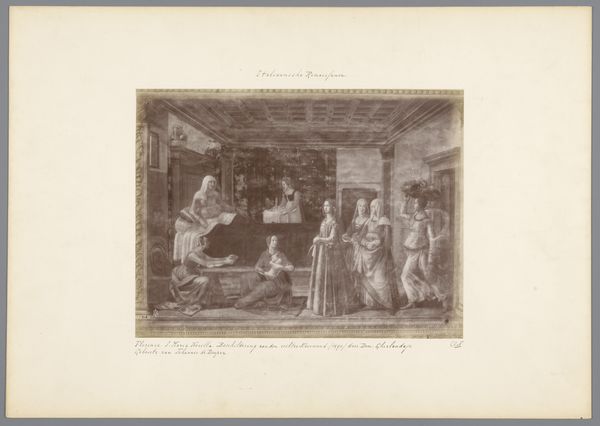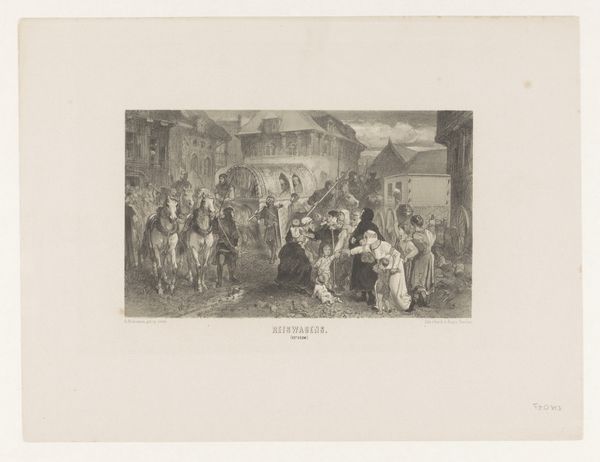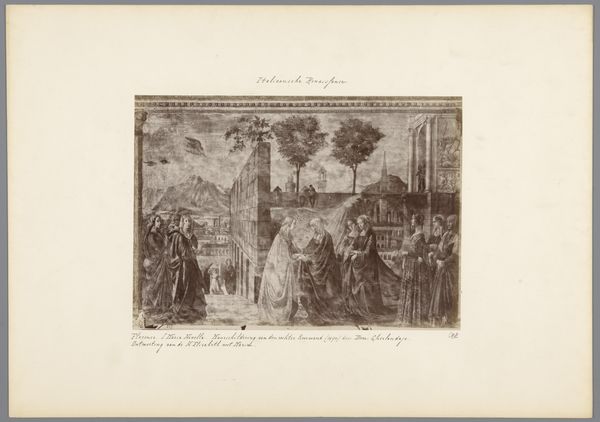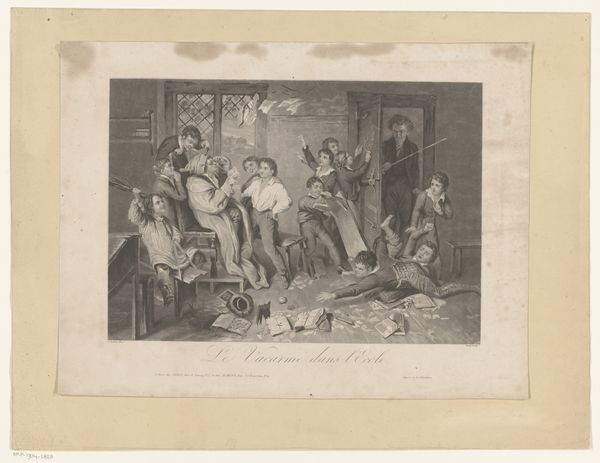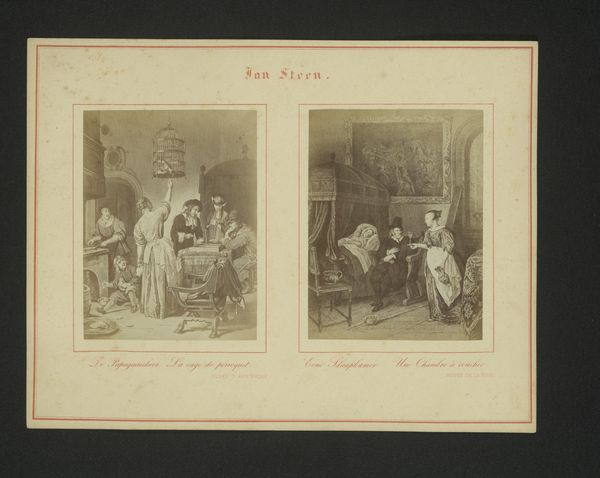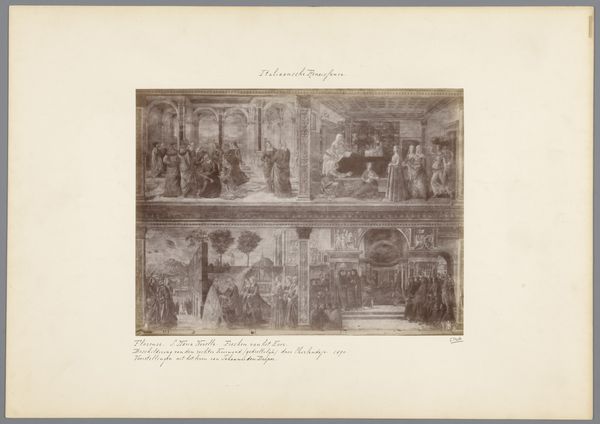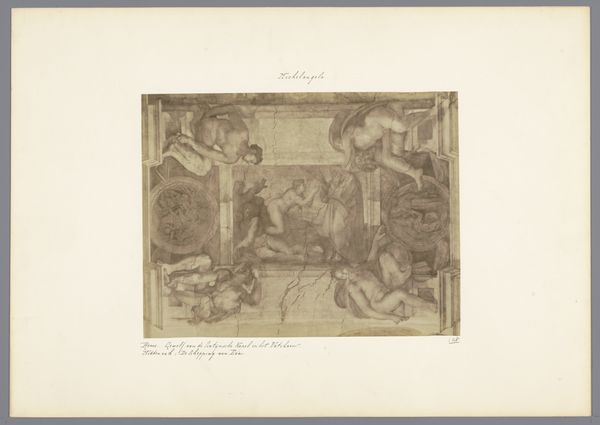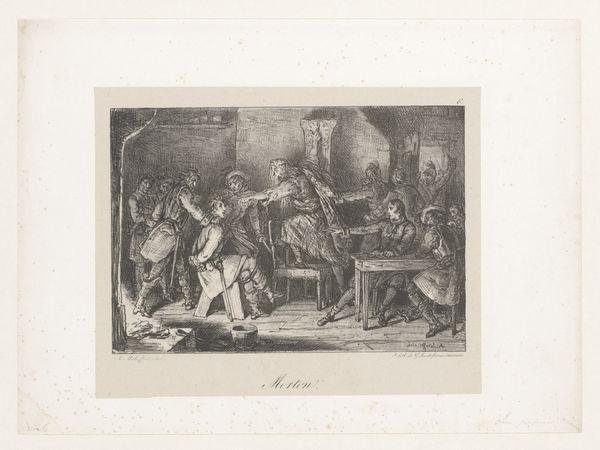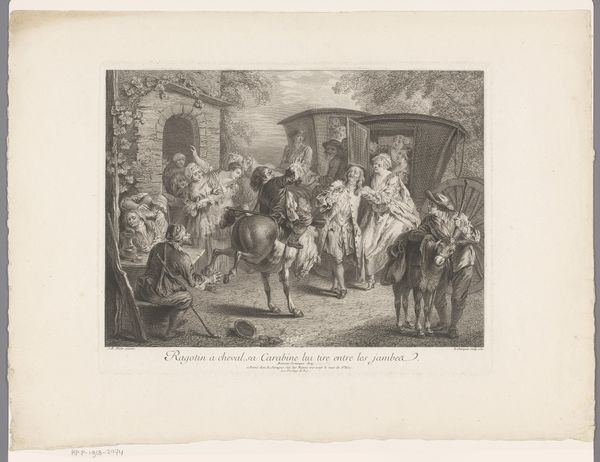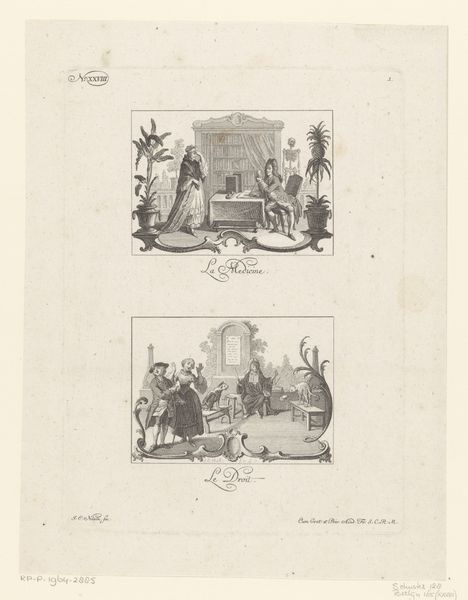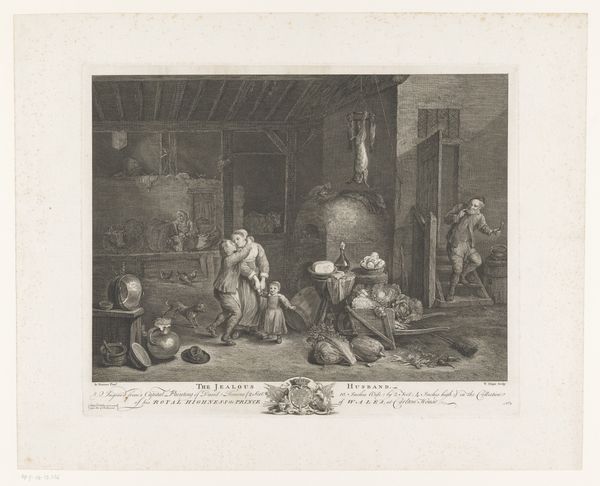
Fotoreproducties van twee genreschilderijen van Adriaen van Ostade c. 1866 - 1874
0:00
0:00
print, photography
#
portrait
#
narrative-art
#
dutch-golden-age
# print
#
landscape
#
photography
#
group-portraits
#
genre-painting
#
realism
Dimensions: height 114 mm, width 98 mm, height 114 mm, width 98 mm
Copyright: Rijks Museum: Open Domain
Curator: Here we have "Photographic reproductions of two genre paintings by Adriaen van Ostade," dating from about 1866 to 1874. Two separate images on a single photographic print. Editor: They both depict, from what I can make out, gatherings. One outdoors, near a house. The light is very soft, the composition is simple, and it feels very… contained. Curator: Precisely. Look closely, and you’ll note that these aren’t original artworks, but photographs OF artworks. We’re dealing with a copy of a copy, really. Think about the labor involved in translating Van Ostade's paintings into reproducible images. Consider the materials—the photographic chemicals, the paper, the printing process. What’s lost and what’s gained in that translation from paint to print? Editor: Interesting. I am more struck by who is depicted in both images. Ordinary people, seemingly working class, caught in moments of daily life. Drinking outside a tavern, gathered in a domestic interior. Look at the representation of class and social structures in these everyday scenes; how did this impact contemporary viewers in a time when social norms were being questioned? The gaze isn't neutral; whose stories were deemed worthy of representation? Curator: Good point. And what does it mean to further reproduce these already idealized depictions of the working class through photography? Consider the distribution of these photographs – who had access to them, and how did this influence perceptions of class and social mobility at the time? Was it romanticism or a genuine attempt at social documentation through the new medium? Editor: Maybe both. It makes me think about contemporary photography's role in representing marginalized communities—are we truly giving voice, or simply reinterpreting struggles for consumption by a privileged audience? And also, were there gender or racial dimensions to those reproductions? Curator: Certainly. Consider also the format. Pairing two related but distinct images creates a dialogue, suggesting a contrast or comparison intended by the photographer or publisher. This photograph isn’t just documenting two artworks; it's making an argument, even if subtle, through its design and construction. Editor: Looking at these images from our own era, raises pertinent questions regarding labor, access, representation, and the ethics of how we view others and their worlds. The ripples from this past inform the now. Curator: It certainly does. Appreciating the materials and processes allows us to reflect more thoughtfully about the final image.
Comments
No comments
Be the first to comment and join the conversation on the ultimate creative platform.
